Art History
How Georgia O’Keeffe’s Brief Refuge in Bermuda May Have Inspired Her Fateful Move to New Mexico
O'Keeffe created 14 drawings during her stay on the island, two of which are in the collection of Masterworks Museum.
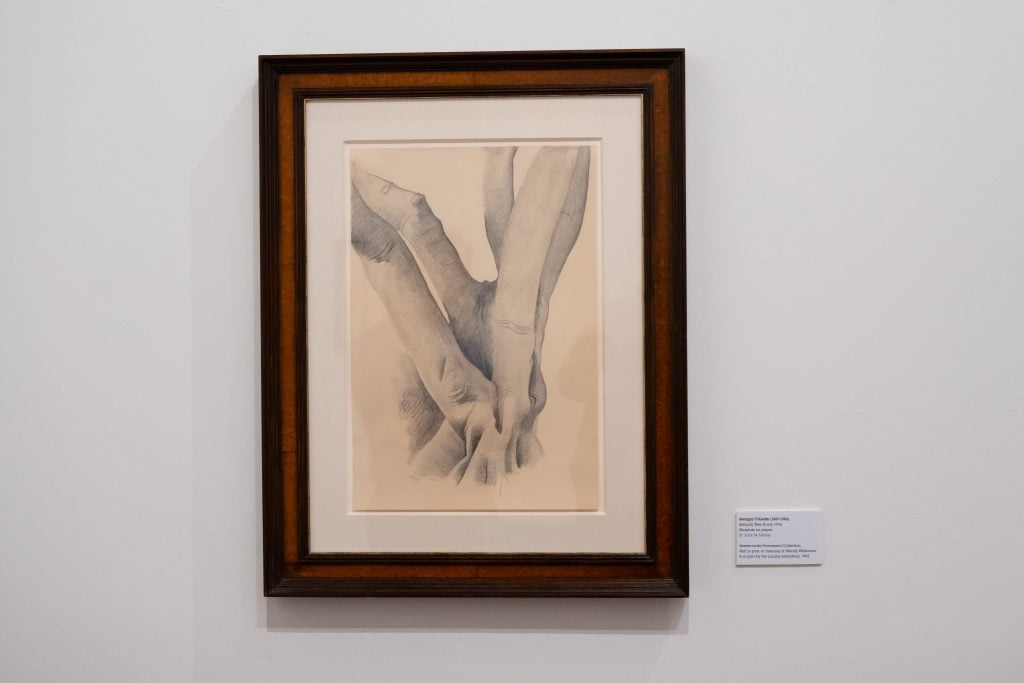
O'Keeffe created 14 drawings during her stay on the island, two of which are in the collection of Masterworks Museum.

Adam Schrader

Georgia O’Keeffe, one of the most celebrated artists of the 20th century, twice found refuge in Bermuda during a brief period in the 1930s, when she was struggling with her mental health. O’Keeffe’s time there may have played a pivotal role in establishing her visual aesthetic and helped to drive her move to New Mexico, the state that is perhaps most closely tied to her career.
Two drawings from that time have now found their way back to Bermuda and into the collection of the Masterworks Museum, where one is currently on view during the island nation’s inaugural Art Month. (The museum hopes to soon acquire a third.) Sara Thom, curatorial researcher at the museum, said scholars are trying to define how this transitional moment may have impacted her life and work.
Though correspondence indicates that O’Keeffe made her decision to relocate to New Mexico while in Bermuda, little is known about how precisely her time on the island might have motivated that move. Museum director Risa Hunter told me during a recent visit she was surprised by how little O’Keeffe biographies say about her time on the island.
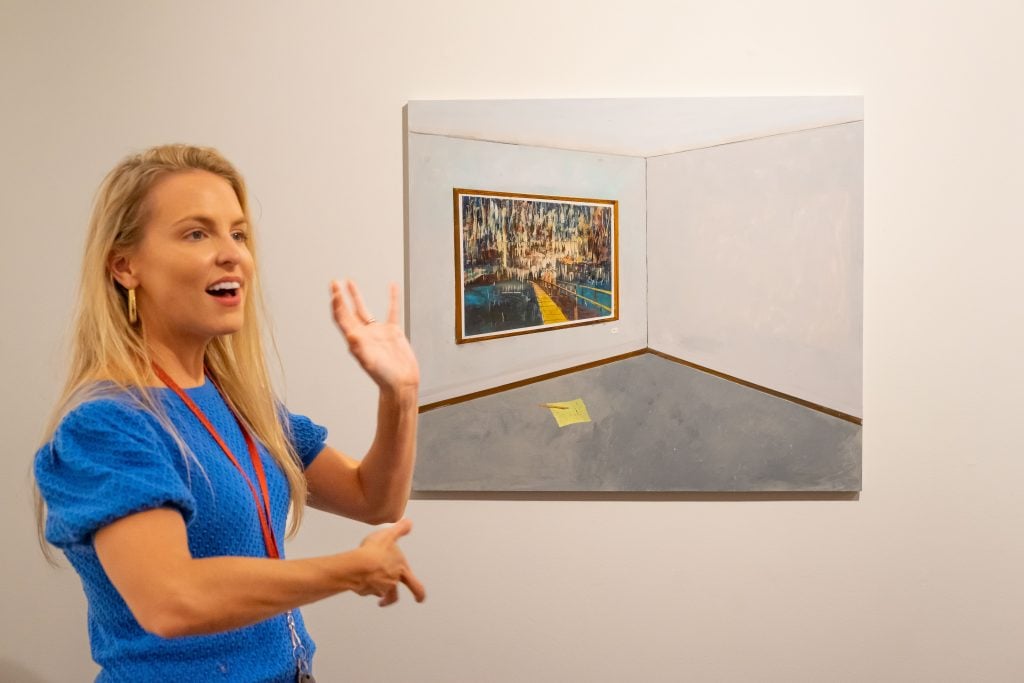
Risa Hunter, the director of the Masterworks Museum in Bermuda, discussing a work on loan from the Studio of William Wegman which is inspired by the island’s Crystal Caves. Photo by Adam Schrader.
“In terms of the aesthetic impact of her trip here on her work, I think there are two interesting points. One is the connection between the works she made here and photography,” Thom said. “O’Keeffe’s first trip to Bermuda was made with Marjorie Content, who was a photographer and who made photographs during that trip. O’Keeffe did not work but did accompany Content on her photographic excursions.”
According to missives contained in Georgia O’Keeffe: Art and Letters, the catalogue to an exhibition held at the National Gallery of Art in Washington, D.C., in 1987, O’Keeffe was hospitalized for depression in New York from February to March 1933 and further recuperated in Bermuda until May of that year.
“Bermuda was really her first international experience—to kind of go out by herself without her husband,” Hunter said. O’Keeffe had only previously been to Canada.
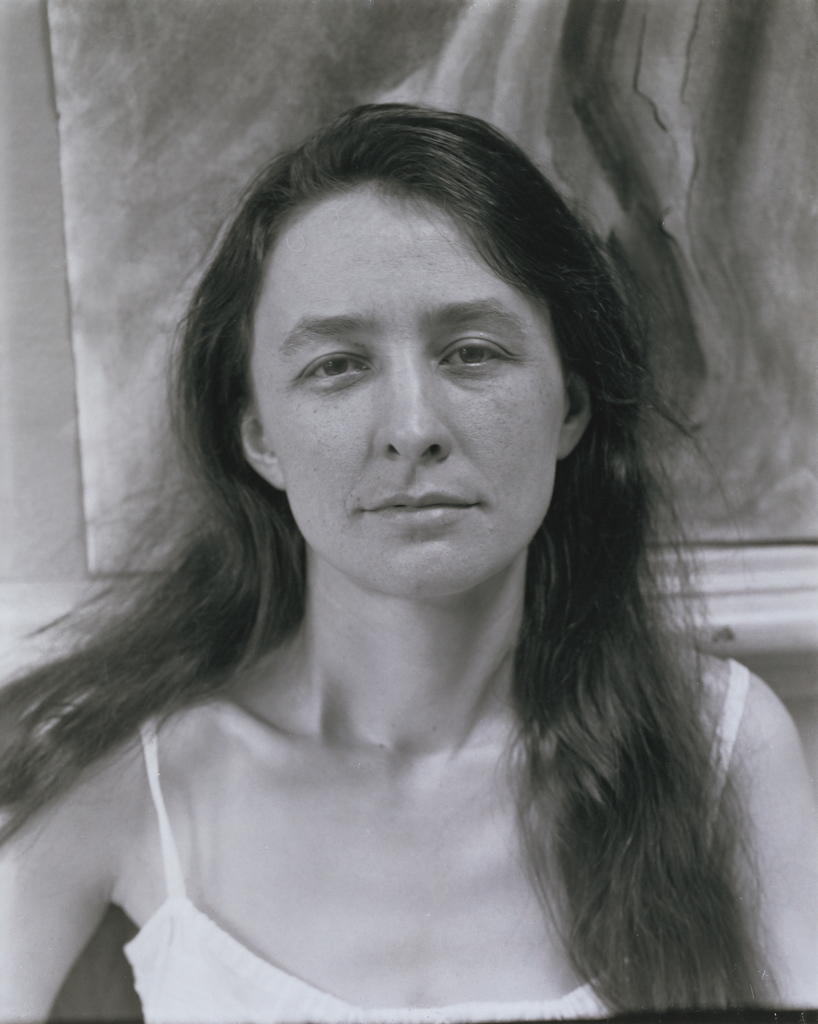
Alfred Stieglitz, Georgia O’Keeffe (in a chemise) (1918). Georgia O’Keeffe Museum, Santa Fe / Art Resource, NY.
A year earlier, in early 1932, O’Keeffe had suffered what her husband, photographer and art dealer Alfred Stieglitz, described as a nervous breakdown following their disagreement over a $1,500 commission from the Radio City Music Hall. Following a stay at a sanitarium, her condition did not improve, and she was admitted to Doctors Hospital for treatment of psychoneurosis in February 1933.
Her depression has also been described as rebellion against her controlling husband, and scholars have noted that Stieglitz had then fallen in love with a younger woman. Stieglitz never visited Bermuda, according to Hunter, but encouraged O’Keeffe and other friends of his to visit the island, which was known, she said, as a place of “relaxation and rejuvenation.”
“She was going through quite an intense mental health crisis,” Hunter said. “He encouraged her to come to the island. She came for the first time in 1933 and as far as we know, she did not pick up a single pencil or paintbrush.”
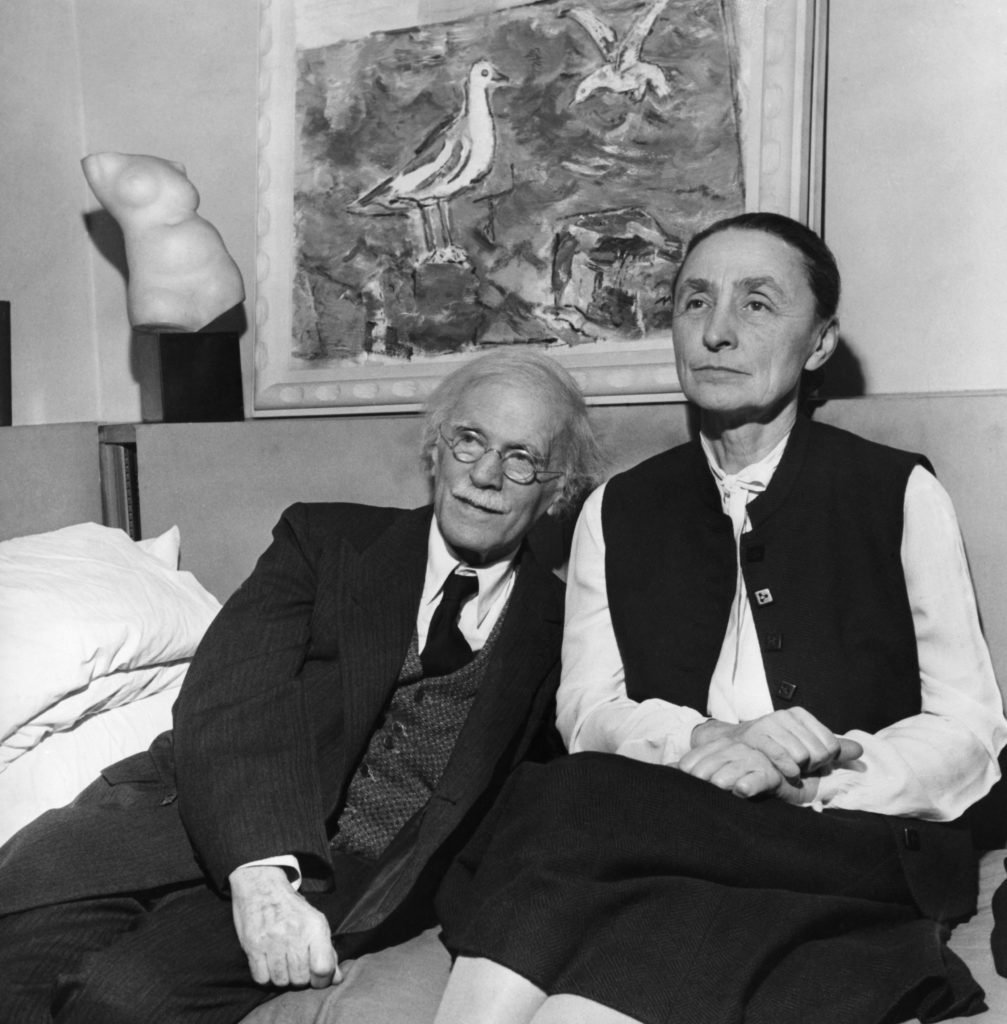
Georgia O’Keeffe pictured with her husband, Alfred Stieglitz. Courtesy of Getty Images.
While O’Keeffe did not document her first trip to Bermuda, her return to the island nation in early March 1934 saw her sketching flora during her travels. Her reflections on the island are also captured in her correspondence.
In a letter to poet and novelist Jean Toomer, written on a boat from New York to Bermuda, O’Keeffe said she was “glad” to be moving deeper into the ocean amid the voyage and “away from everyone and everything that seems connected with my life.” Still, she wrote about her “loneliness” and that, in her connections with people, she felt “like a reed blown about by the winds.”
The following month, O’Keeffe wrote a letter to Rebecca Strand, wife of photographer Paul Strand, from Bermuda, describing how “sitting in the sun… for two months” had improved her well-being. She discussed being amused by “flowers and birds” and “all the pretty things,” but said she was going to return to New York if she could get passage two days later.
“After that? I begin to think of New Mexico with a vague kind of interest,” O’Keeffe wrote. “And I also think I want to keep house—what an idea!” She would permanently settle in New Mexico in 1949 after Stieglitz’s death.
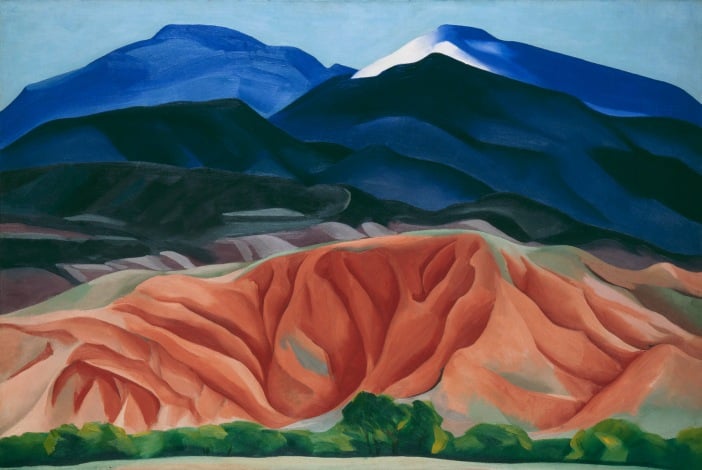
Georgia O’Keeffe, Black Mesa Landscape, New Mexico / Out Back of Marie’s II (1930). Courtesy of Tate Modern.
Hunter said O’Keeffe’s move to New Mexico was motivated by her feelings of claustrophobia in New York. In New Mexico, Hunter said, O’Keeffe could be left alone—a feeling she sought out after her time in Bermuda.
“In Bermuda, one of the things that has always been very true about well-known artists or celebrities that come to the island, is there is no fanfare,” Hunter said. “She could just kind of enjoy being here and being under the radar.”
As to what might have motivated O’Keeffe to resume drawing in Bermuda, Hunter said that artists are “obsessed with Bermuda’s light. They were obsessed with the colors here, the warmth, the ocean. My guess is that was a similar kind of pull for her.”
O’Keeffe’s Bermuda drawings, made with charcoal on paper despite having packed paint for her travels, have commonalities with the colorful landscapes she would make in New Mexico, Hunter suggested. She compared the desert landscape with the ocean around Bermuda.
“You look out and it’s just nature. I think she was very inspired by nature because she has a lot of flat backgrounds you could see with the desert and ocean,” Hunter said. “Nature continued to inspire her. I have to believe that there was some sort of connection.”
Hunter called the 14 works that O’Keeffe made on the island “intimate,” in contract to the large, colorful showstoppers the artist would become known for. The Masterworks Museum, founded by Bermudian photographer Tom Butterfield, highlighted these works, alongside those by Winslow Homer and Andrew Wyeth, in an exhibition in 1987. (The 1994 show “O’Keeffe: The Bermuda Respite” at the Bermuda National Gallery showcased 11 of the 14 works.)
Masterworks has since put in “extraordinary” efforts, Hunter said, to acquire its two O’Keeffe drawings and hopes to one day return all 14 pieces to the island.
“The whole idea was around repatriation of these works after the exhibition closed,” Hunter said. “There was a small group including our founder, Tom, who said, ‘These works need to be in Bermuda.’”
More Trending Stories:
Four ‘Excellently Preserved’ Ancient Roman Swords Have Been Found in the Judean Desert